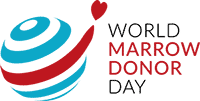Brenda Masuku was the SABMR’s first Black South African donor. When asked about her decision to register, Brenda joked that it was “peer pressure.” She was working for a medical aid company at the time, and a group of her Caucasian colleagues had decided to register during their lunch break after hearing that a local child from Durban was looking for a match. They hoped that she would tag along as well, and Brenda agreed.
Then, in 1999, Brenda got a call from the Registry saying she was a possible match for an American patient who was currently in remission but may someday need a transplant. “They wanted to make sure that there was a donor available if she needed one,” Brenda explained. “I said yes, but I didn’t think it would eventually happen.”
Even though she never expected to donate, Brenda was willing to give should the time come when her patient needed her. “Should I need someone to donate for me, I would need that person to go through with it, so I’ll go through with it,” she remembers thinking when they asked.
A year and a half later, she received the call. The patient had relapsed and needed a transplant. But this time, Brenda was seven months pregnant, and at the time, the injection received before donation hadn’t yet been tested on pregnant women. They deferred the transplant for the time being.
A few months later, they called again, and this time, the patient was in urgent need. With a young infant at home, Brenda agreed to donate. When her baby was six months old, Brenda stopped breastfeeding, received the injections, and donated. A few weeks later she was back to breastfeeding as normal.
Some years later, Brenda and her daughter were invited to meet Brenda’s recipient in Los Angeles. They travelled all the way from South Africa to meet her. Unfortunately, her recipient has since passed away, but Brenda is still grateful for the role she was able to play in keeping the young girl alive for a little while longer. “I’m happy that she got the opportunity for more time,” Brenda says.
Almost twenty years later, Brenda now has three children. Her oldest child, an infant at the time of Brenda’s donation, is now 18, and Brenda hopes that she will make the decision to join the Registry. Brenda says that her daughter has enjoyed discussing her mother’s donation with her schoolmates during science classes or when there was an awareness event at her school.
Despite taboos against medical donations in the Black South African community, Brenda is doing what she can to share her testimony with friends and family. “People only realise the importance of bone marrow when they have a family member that needs it,” Brenda says. “The little awareness I can spread, I will.” As we say in South Africa, “ISANDLA SIHLAMBA ESINYE”, which means “one hand washes the other”. Let us come together to save more lives.

